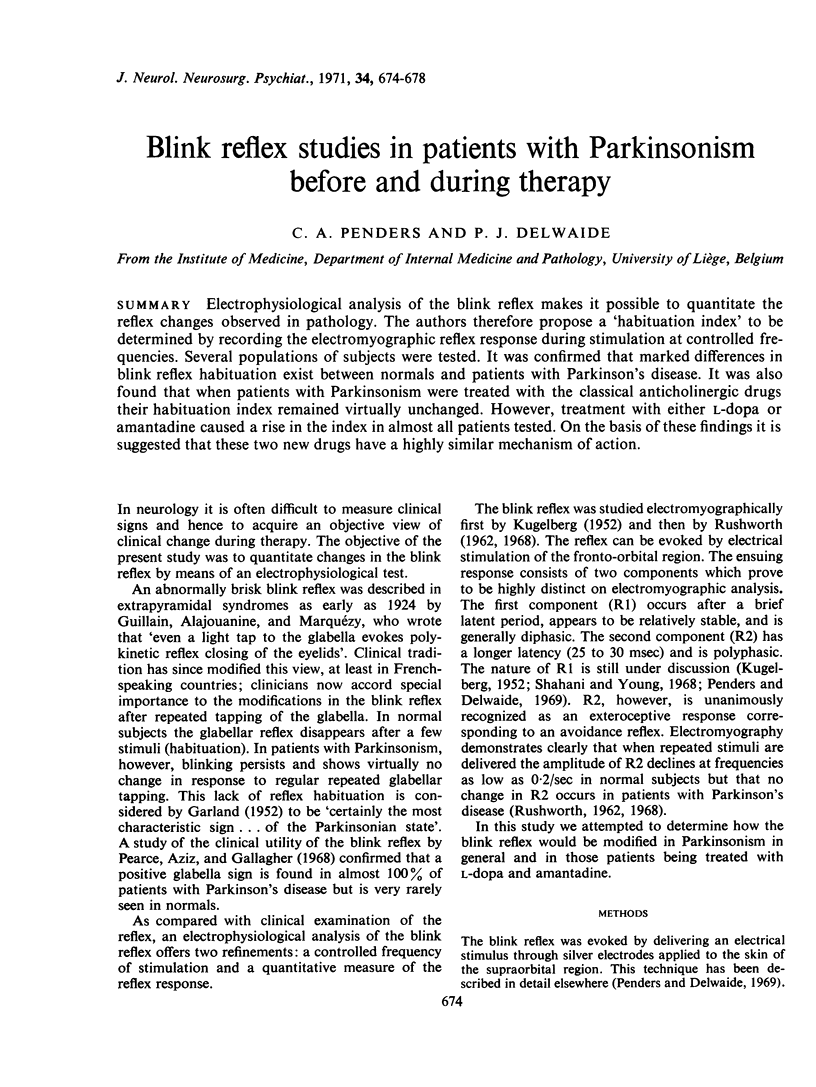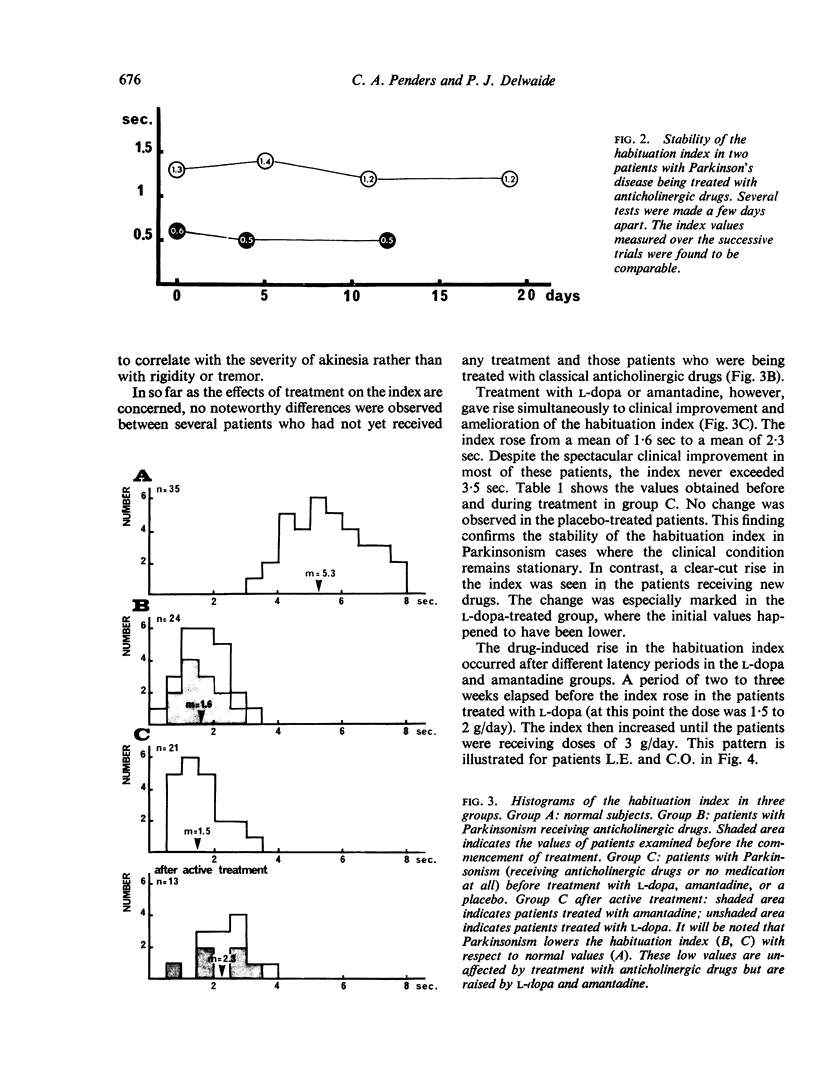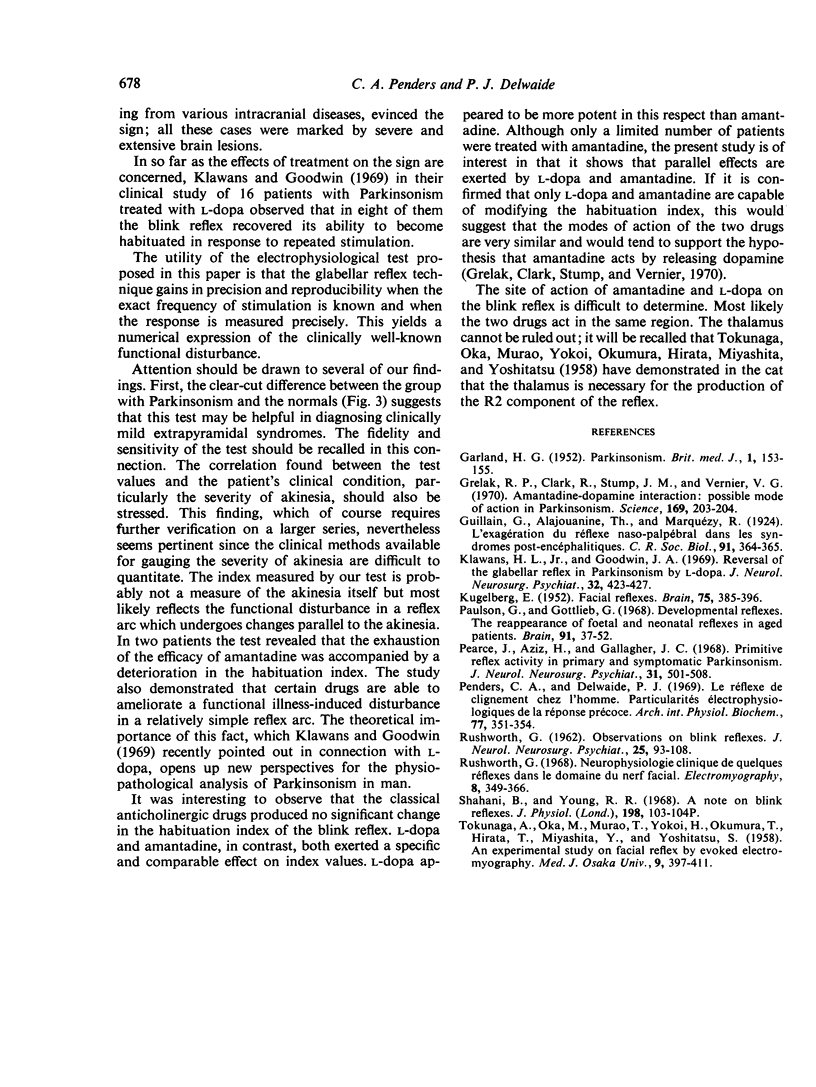Abstract
Electrophysiological analysis of the blink reflex makes it possible to quantitate the reflex changes observed in pathology. The authors therefore propose a `habituation index' to be determined by recording the electromyographic reflex response during stimulation at controlled frequencies. Several populations of subjects were tested. It was confirmed that marked differences in blink reflex habituation exist between normals and patients with Parkinson's disease. It was also found that when patients with Parkinsonism were treated with the classical anticholinergic drugs their habituation index remained virtually unchanged. However, treatment with either l-dopa or amantadine caused a rise in the index in almost all patients tested. On the basis of these findings it is suggested that these two new drugs have a highly similar mechanism of action.
Full text
PDF




Selected References
These references are in PubMed. This may not be the complete list of references from this article.
- Close R., Hoh J. F. Effects of nerve cross-union on fast-twitch and slow-graded muscle fibres in the toad. J Physiol. 1968 Sep;198(1):103–125. doi: 10.1113/jphysiol.1968.sp008596. [DOI] [PMC free article] [PubMed] [Google Scholar]
- GARLAND H. G. Parkinsonism. Br Med J. 1952 Jan 19;1(4750):153–156. doi: 10.1136/bmj.1.4750.153. [DOI] [PMC free article] [PubMed] [Google Scholar]
- Grelak R. P., Clark R., Stump J. M., Vernier V. G. Amantadine-dopamine interaction: possible mode of action in Parkinsonism. Science. 1970 Jul 10;169(3941):203–204. doi: 10.1126/science.169.3941.203. [DOI] [PubMed] [Google Scholar]
- KUGELBERG E. [Facial reflexes]. Brain. 1952 Sep;75(3):385–396. doi: 10.1093/brain/75.3.385. [DOI] [PubMed] [Google Scholar]
- Klawans H. L., Jr, Goodwin J. A. Reversal of the glabellar reflex in Parkinsonism by L-dopa. J Neurol Neurosurg Psychiatry. 1969 Oct;32(5):423–427. doi: 10.1136/jnnp.32.5.423. [DOI] [PMC free article] [PubMed] [Google Scholar]
- Leibowitz U., Sharon D., Alter M. Geographical considerations in multiple sclerosis. Brain. 1968 Mar;91(1):37–52. doi: 10.1093/brain/91.1.37. [DOI] [PubMed] [Google Scholar]
- Pearce J., Aziz H., Gallagher J. C. Primitive reflex activity in primary and symptomatic Parkinsonism. J Neurol Neurosurg Psychiatry. 1968 Oct;31(5):501–508. doi: 10.1136/jnnp.31.5.501. [DOI] [PMC free article] [PubMed] [Google Scholar]
- Penders C. A., Delwaide P. J. Le réflexe de clignement chez l'homme. Particularités électrophysiologiques de la réponse précoce. Arch Int Physiol Biochim. 1969 May;77(2):351–354. [PubMed] [Google Scholar]
- RUSHWORTH G. Observations on blink reflexes. J Neurol Neurosurg Psychiatry. 1962 May;25:93–108. doi: 10.1136/jnnp.25.2.93. [DOI] [PMC free article] [PubMed] [Google Scholar]
- Rushworth G. Neurophysiologie clinique de quelques reflexes dans le domaine du nerf facial. Electromyography. 1968 Nov-Dec;8(4):349–366. [PubMed] [Google Scholar]


